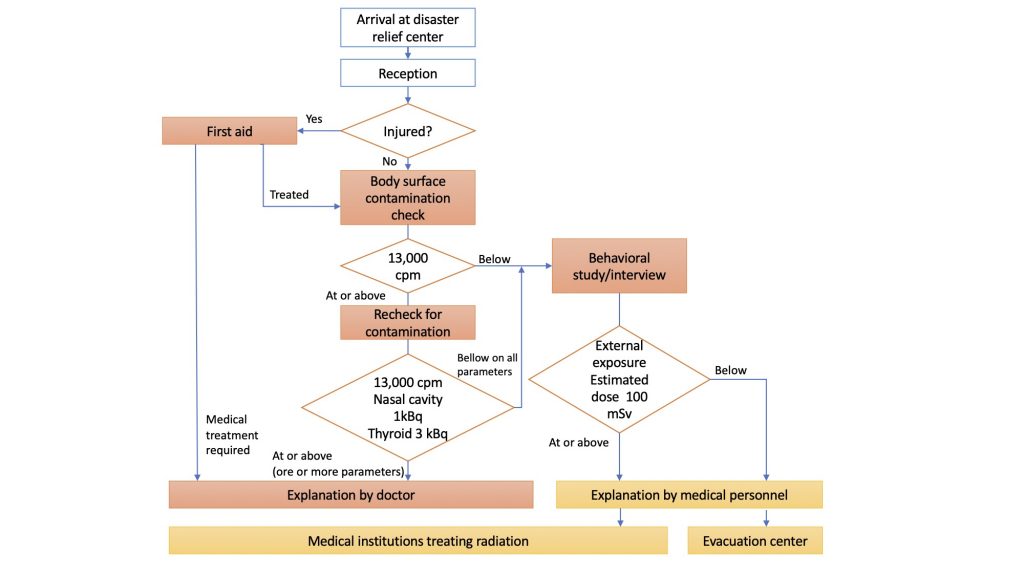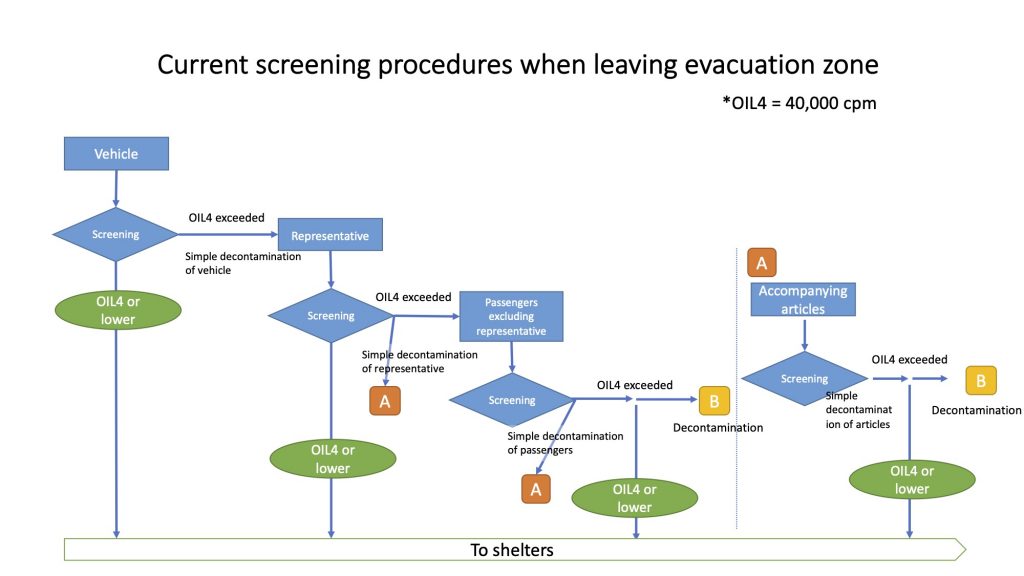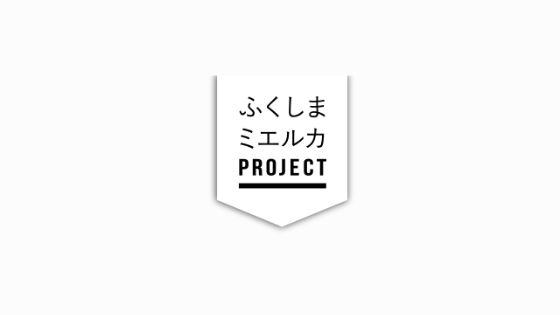Initial exposure not properly documented
One of the reasons it has been difficult to prove a cause-and-effect relationship between accident-related radiation exposure and health impacts is that initially, no testing was done for thyroid exposure.
At the time of the disaster, Fukushima Prefecture’s emergency medical manual for screening of evacuees (at time of evacuation) said that if body surface contamination was detected at 13,000 cpm[1] or higher, the body surface was to be cleaned (wiped and decontaminated), the measurement repeated, testing for thyroid exposure and a nasal smear conducted,[2] stable iodine was to be administered, and details recorded. But in reality, none of this was actually done.
Generally there were two objectives of screening. The first was to quickly determine if a citizen had internal exposure and respond accordingly, and second, to prevent the spread of radioactive materials. But the first objective was skipped completely.
This is because evacuees may have been inhaling radioactive iodine or other substances and getting internal exposure from falling radioactive substances. The detection of body surface contamination at 13,000 cpm was evaluated as the possibility that a 1-year-old child might have an internal exposure equivalent to a thyroid dose of 100 mSv. That is why, if 13,000 cpm was detected, a thyroid exposure test and the administering of stable iodine were prescribed as the second step.
However, due to factors such as long lines for screening in the confusion of evacuation, the prefectural government discussed how to simplify procedures with the central government on March 13, the standard of 13,000 cpm was set on March 14, and the maximum value that could be measured by a GM survey meter was raised to 100,000 cpm.
But even if the standard was exceeded, no thyroid test was done or instructions given to administer stable iodine. It is not clear why it turned out that way. In all, 266,042 persons were screened, but records were only taken for a few thousand. Fukushima Prefecture admits that this was contrary to the Fukushima Prefecture emergency radiation exposure medical action manual that was in use at the time.
K-san, an evacuee from the Tsushima district of Namie, was screened on March 15, 2011 at the Koriyama General Gymnasium during the evacuation. This person saw the needle of the detector swing all the way over, indicating a reading higher than 100,000 cpm, but no thyroid measurement was performed and no record was noted. K-san was told to remove her jacket, which was placed into a plastic bag and handed back. K-san was instructed to wash her hands and hair as soon as possible.
“No one asked me my name. But when they asked where I was from and I said “Tsushima,” and I could hear the testers comment among themselves that I was yet “another case from Tsushima.” K-san subsequently developed thyroid cancer. But there was no record to verify the exposure level at that time.
At a July 2, 2019 meeting of Fukushima Prefecture personnel with K-san and FoE Japan, the personnel admitted that due to extenuating circumstances procedures actually practiced did not comply with the manual. They also stated that the prefecture has only a portion of the records of evacuee measurements, and that because they don’t have the information, they don’t know why no measurements of thyroid exposure were taken for residents that showed 13,000 cpm or greater as prescribed in the manual.
The Nuclear Emergency Response Headquarters only took thyroid measurements of 1,080 children in Iitate, Kawamata, and Iwaki between March 24 and 30, 2011. Officials say that no further measurements were taken because other cases were all below 100 millisieverts. No thyroid testing was done for residents who evacuated from designated evacuation zones. Counterintuitively, the government says that evacuees were not exposed to radiation because they evacuated. But in reality, some evacuees ended up going in the same direction as the dense radioactive plume flowed, so they may have actually inhaled radioactive iodine during evacuation and at their destination.
Meaningless screenings

Figure: Screening procedures as of 2011
Source: Nuclear Safety Commission
Currently, local governments located within 30 kilometers of a nuclear plant are expected to prepare a nuclear accident evacuation plan based on the “Nuclear Emergency Response Guidelines” issued by the Nuclear Regulation Authority.
The term “screening” was been replaced with “testing when leaving evacuation zone” (in Japanese). The 13,000 cpm criterion was raised to 40,000 cpm. This would be equivalent to a 300 mSv does of thyroid exposure for a one-year-old child. Moreover, the procedure is to first test the vehicle, and if the reading exceeds 40,000 cpm, test one person, and if that person’s reading exceeds 40,000 cpm, test all passengers. If the reading exceeds 40,000 cpm, a simple decontamination is done, but nothing is written in the instructions about doing any repeat tests, thyroid measurements, a nasal smear or any such measures to discover any possible internal exposure. Nothing is written about keeping records. The original purpose of determining whether or not residents have internal exposure to radiation has been completely lost.

Figure: Current screening procedures.
Admittedly, screening procedures in the event of a nuclear accident could result in traffic congestion and other delays that could hinder a timely evacuation. However, it would also be misguided if screening procedures were meaningless. If it is not possible to deal with the dual goals of having a timely evacuation and also screening to identify citizens that have had internal exposure to radiation, what it really means is that it is impossible to formulate a practical evacuation plan. And if that is the case, Japan should give up on the restart of its nuclear power plants.
[1] A measure of exposure by radiation tester (counts per minute)
[2] Measurement of radiation done when there are concerns about having inhaled radiative substances, done by collecting a sample from the nasal cavity by wiping with a cotton swab, etc.

